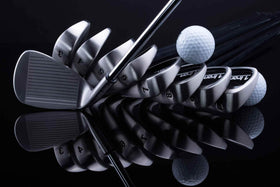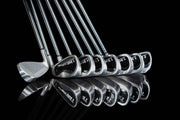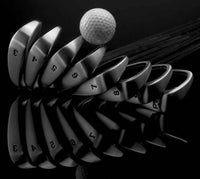Hitting the Driver
by David Lake
The very nature of a driver and its designed purpose makes it a very individualistic golf club requiring its own swing, etc. Due to the fact that it is the only club in the bag that does not make contact with the ground through impact, has the lowest loft angle of any golf club, and is used to hit a ball that is teed up lends itself to every swing fault that exists. There is no question that becoming proficient with a driver is much more difficult than with any other golf club. Consequently, the only way to become proficient with it is through practice, practice, and more practice.
For years I could not hit a straight drive to save my life. Certainly I could hit monster drives, but instead of keeping track of fairways hit I kept track of counties hit. Like all golfers I wanted to add the extra distance that my #3 wood did not provide plus I wanted the same level of accuracy as my #3 wood. The solution to my problem came through practice. For three days straight I went to the range with only my driver and hit 40 balls per session, pausing and analyzing between each shot (hitting balls one right after another without a 10 - 20 second pause in between shots is exercise, not practice). I tried this stance and that swing, this grip and that ball position, etc. and finally by the third day everything fell into place and I was nailing the driver like a pro. Bear in mind that it is impossible to make a swing change or any other adjustment on the golf course where you are under scoring pressure. If you hit just one bad shot you will give up on the change immediately and revert to your old swing.
What is interesting is that to this day I only need to spend two or three days at the range in the spring and I will maintain my driver swing all summer long. Anyway, here are a few things that may help:
- Go to the range three days in a row only taking your driver.
- Never hit more than 40 balls per day and pause to analyze between each shot. Hitting more balls than this is counter-productive as you will become tired, sloppy, and discouraged.
- Play the ball off of your left heel (R/H golfer) and initially tee the ball high. You should experiment with tee height until you find what works best for you.
- It is extremely important to stay behind the ball through impact, and you want to hit upwards on the ball to maximize distance.
- Try different things: grip, stance, etc. until something starts to click. This is the reason you are at the range in the first place - bad shots don't matter.
- Try to hit the ball as hard as you can and fully release your wrists through impact. When taking a practice swing you should hear a whooshing sound through the impact zone.
- Never play a round of golf without warming up with your driver at the range. I always split a small bucket of balls with my playing partners before teeing off.
- The swing with a driver is much flatter than with any of the other golf clubs. You might try imagining throwing a side-arm pitch or skipping a rock on a pond. It is always far better to go flatter with the swing plane than upright.
The driver itself is a very important part of the equation. Do not believe all of the marketing hype that is promulgated in magazine and television advertising, and certainly do not make your purchase decision based upon your favorite player’s endorsement (he is being paid handsomely to play a particular driver). Professional golfers make 90% of their income from lucrative endorsement deals (believe me that they would play croquet mallets if the price was right).
The typical driver on the market today is 46″ in length, has a loft angle of 8º to 10.5º, and has a lie angle of 55º or 56º. However, the vast majority of golfers will hit the ball farther and with a much higher degree of accuracy using a driver that is fitted to them based upon their W-T-F measurement, incorporates the higher loft angle range, and utilizes an upright clubhead lie angle.
This was the criteria I used in the design of our Dark Horse Driver: club length is 43″ to 46″ (based upon the W-T-F measurement of the golfer), loft angle is 10.5º, and clubhead lie angle is 60º (the highest of any driver in golf). The reason for the very high clubhead lie angle is that it virtually eliminates the tendency to slice the ball or push it off to the right. Quite frankly, it is the easiest to hit and most accurate driver that I have ever played. Much longer off the tee and a lot more fairways hit.










